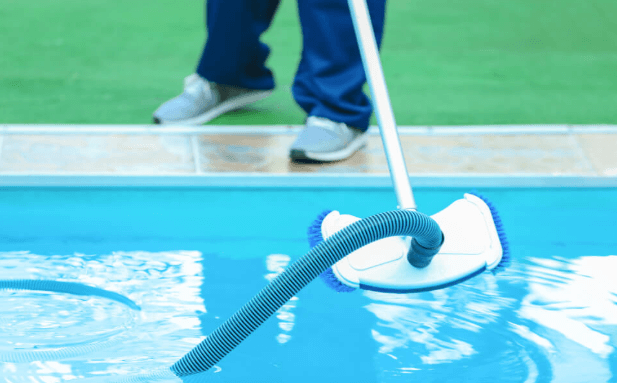Serene Waters Begin with the Right Swimming Pond Vacuum Method

Transforming a murky pond into a crystal-clear haven begins with selecting the right equipment. Whether you’re nurturing koi, goldfish, or just a peaceful garden water feature, keeping the water clean is more than an aesthetic decision—it’s essential for health and balance. Among the many tools available today, a swimming pond vacuum plays a key role in maintaining clarity and supporting your chosen filter system.
What to Think About Before You Choose
Choosing a filtration setup for your pond is not a one-size-fits-all decision. Several core factors should shape your final choice.
Know Your Pond’s Size and Shape
To pick an appropriate system, start by understanding the pond’s volume. Multiply the length, width, and depth in meters, then multiply by 1,000 to get the total in liters. Larger ponds with deeper zones require more robust systems—especially if fish are involved.
Consider Your Fish Community
The more fish you have—and the messier they are—the stronger your system needs to be. Koi, for example, produce more waste than goldfish, so a heavier-duty combination of biological and mechanical filtration is necessary.
Look at Sunlight and Location
Ponds that get full sun throughout the day tend to encourage algae growth. These setups benefit from systems that include UV clarifiers and strong flow rates to keep the water moving and clean.
Types of Filters and How They Work
Different ponds call for different filtration strategies. Here’s a breakdown of the most common types available.
Submersible Units for Smaller Spaces
These all-in-one systems are placed directly into the pond and are best suited for smaller water features under 2,500 liters. They’re simple to install and easy to hide but may struggle with larger fish populations or heavy waste.
Pressurized Systems for Versatility
Placed above or below ground, these filters are ideal for medium-sized ponds and are often paired with waterfalls. Many models include UV clarification and are easier to conceal in landscaping.
Flow-Through Systems for Serious Filtration
Great for large or heavily stocked ponds, these filters return water via gravity and offer excellent efficiency. They’re well suited to koi ponds, particularly when paired with a swimming pond vacuum to handle sludge.
Drum Filters for High-Tech Needs
These advanced systems offer top-tier filtration with automatic cleaning features. While they come at a higher price, they are ideal for large ponds with lots of fish or debris.
What Makes a System Complete?
The best filtration solutions combine multiple elements to achieve a healthy pond environment.
Mechanical Cleaning
This part traps leaves, sediment, and waste using sponges or screens. It’s your pond’s first line of defense against murkiness.
Biological Balance
Beneficial bacteria break down harmful substances like ammonia and nitrites, keeping your pond’s ecosystem in balance.
Ultraviolet Treatment
UV clarifiers help control algae blooms and microscopic pathogens that cloud water and threaten fish health.
Optional Chemical Support
Some systems allow for added media to control phosphate levels or improve water clarity. These are helpful but not always necessary.
Smart Setup for Long-Term Success
The way you install your pond equipment can impact its performance just as much as the system itself.
Positioning Matters
Flow-through filters should sit above the pond to allow water to return via gravity. Pressurized systems work best near waterfalls or outlets.
Access Is Important
Leave enough space around your setup to easily reach it for maintenance. Regular access ensures it stays clean and working efficiently.
Add a Bottom Drain
In larger or deeper ponds, installing a bottom drain can significantly reduce sludge buildup and improve circulation. A swimming pond vacuum can then be used to finish the job more thoroughly.
Caring for Your Equipment
Even the best systems won’t work if you don’t take care of them. A little routine maintenance goes a long way.
Monthly Chores
Mechanical components should be rinsed out regularly, while biological media should only be cleaned with pond water to protect the bacteria.
Seasonal Checks
Change UV bulbs annually and inspect seals, pumps, and intakes at the start of each season. Weekly visual inspections will help you catch problems early.
Mistakes That Could Cost You
Even a well-chosen system can fall short if common issues aren’t avoided.
Don’t Undersize
Many first-time pond owners underestimate the needs of their setup. Choose a system that handles at least the full volume of your pond—and then some, if fish are present.
Watch Your Flow Rate
Make sure your pump and filter work well together. If your pump pushes more water than the filter can handle, it won’t clean effectively.
Avoid Hidden Placement
Don’t bury or hide your system so well that you can’t get to it. A little visibility now can save you a major headache later.
When It’s Time for an Upgrade
No matter how good your current setup is, certain signs indicate it’s time to improve.
Trouble Signs
- Murky or cloudy water that won’t clear
- Green algae blooms despite regular care
- Fish showing signs of stress or illness
- You find yourself cleaning more often than you’d like
Upgrading your filtration, or adding a swimming pond vacuum, could drastically improve results.
Matching the System to the Pond
Still unsure which path to take? Here’s a quick pairing guide.
Small and Peaceful
For wildlife or decorative ponds under 2,500 liters, a basic submersible unit is often enough—no need to overcomplicate things.
Medium with Goldfish
Pressurized filters, especially those with UV clarifiers, will handle moderate waste while maintaining good clarity.
Koi Enthusiasts
These fish require clean, oxygen-rich water. A flow-through system or high-capacity drum filter is the best choice.
Natural Swimming Ponds
These benefit from multi-stage biological systems that mimic natural processes. Pair with a swimming pond vacuum to clean the floor without disturbing the setup.
Clearing Up Confusion
What is a swimming pond vacuum?
A swimming pond vacuum is a specialized tool designed to remove sediment, algae, and sludge from the bottom of swimming or natural ponds without draining them. It keeps the water clear and prevents buildup that could damage filtration systems.
Do I need a vacuum if I already have a filter?
Yes, filters remove suspended particles and process waste, but vacuums target settled debris that filters often miss. They complement each other.
How often should I vacuum my pond?
For natural swimming ponds or koi setups, vacuuming once a month during warmer months is ideal. Heavily used ponds may need it more often.
Can a vacuum harm my pond plants or fish?
Not when used properly. Most models have adjustable suction levels and special heads designed to avoid disturbing plants or harming fish.
Is manual or automatic better?
Manual vacuums give more control and are affordable, while automatic models save time for larger ponds. Choose based on pond size and usage.
Final Thoughts on Keeping Your Pond Crystal Clear
The right filtration system, supported by proper maintenance tools like a swimming pond vacuum, ensures your pond stays beautiful and balanced. Whether you’re enjoying a peaceful view or swimming in natural waters, keeping things clean doesn’t have to be complicated. It just takes the right tools and a bit of consistent care to turn your pond into the relaxing retreat you imagined.



